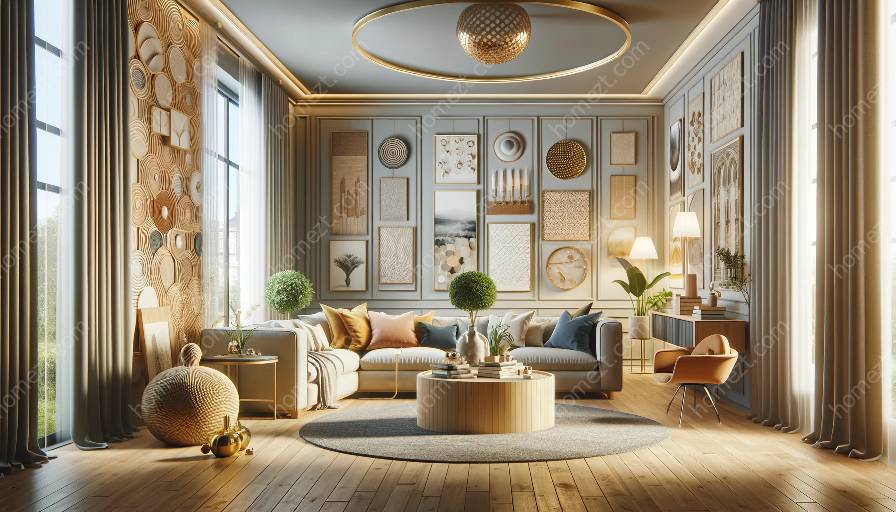When it comes to interior design and styling, one of the key considerations is how to define and differentiate various functional areas within a space. Wall coverings and paint techniques can play a significant role in achieving this goal, creating attractive and practical environments. In this article, we'll explore how these elements can be used effectively and provide tips for enhancing the aesthetic appeal of functional spaces.
Defining Functional Areas with Wall Coverings
Wall coverings, such as wallpaper, can be a powerful tool for visually defining and separating functional areas within a room. By choosing different patterns, textures, and colors, you can create distinct zones for dining, working, relaxing, and more. For example, in an open-plan living and dining area, using a bold, graphic wallpaper on the dining area wall can help to delineate the space and add personality.
Additionally, wallpaper can be used to create feature walls that draw attention to specific areas, such as the head of a bed in a bedroom or the backdrop of a home office. This not only defines the function of the space but also adds visual interest and depth to the overall design.
Utilizing Paint Techniques for Differentiation
Paint techniques, such as color blocking and accent walls, offer versatile options for defining functional areas within a space. By using different paint colors or textures, you can visually separate zones without the need for physical barriers. For instance, painting the wall behind a sofa in a different color than the surrounding walls can help distinguish the living area within an open-plan layout.
Moreover, painting techniques like ombre, stenciling, and geometric patterns can add a unique touch to functional areas, creating a sense of individuality and style. These techniques can be particularly effective in areas like home offices, where creativity and inspiration are needed, or in children's play areas, where vibrant and playful designs can encourage imagination.
Combining Wall Coverings and Paint Techniques
While wall coverings and paint techniques can be used individually to define functional areas, combining the two can produce striking and impactful results. For instance, using a combination of textured paint and wallpaper in a designated workspace can enhance the ambiance and productivity of the area.
Furthermore, using a cohesive color palette across both wall coverings and paint can create a sense of harmony and flow between different functional areas. This can be particularly beneficial in open-plan living spaces, as it helps to tie the various zones together while still maintaining their individual identities.
Tips for Effective Application
When incorporating wall coverings and paint techniques to define functional areas, several considerations should be kept in mind to ensure a successful outcome:
- Consider the overall design aesthetic and functionality of each area before choosing wall coverings and paint techniques. The goal should be to enhance the space while creating a cohesive and visually appealing environment.
- Pay attention to the scale of patterns and colors. Large patterns can visually enclose a space, while lighter colors can create a sense of openness and airiness. Experiment with different options to find the right balance for each functional area.
- Take into account natural light and artificial lighting when selecting wall coverings and paint colors. Lighting can significantly impact the way colors and textures appear, so it's essential to consider these factors during the design process.
- Utilize accent elements and accessories to complement the chosen wall coverings and paint techniques. This can help to further define the functional areas and tie the design elements together.
- Regularly maintain and clean wall coverings and painted surfaces to ensure their longevity and continued visual impact. Proper maintenance will help preserve the appeal of the defined functional areas over time.
Conclusion
Wall coverings and paint techniques offer a myriad of possibilities for defining and differentiating various functional areas within a space. Whether it's creating distinct zones within an open-plan layout, adding character to specific areas, or enhancing the overall visual appeal, these elements play a crucial role in interior design and styling. By carefully incorporating these techniques and considering the tips provided, you can effectively transform your space, making it both attractive and practical.


























